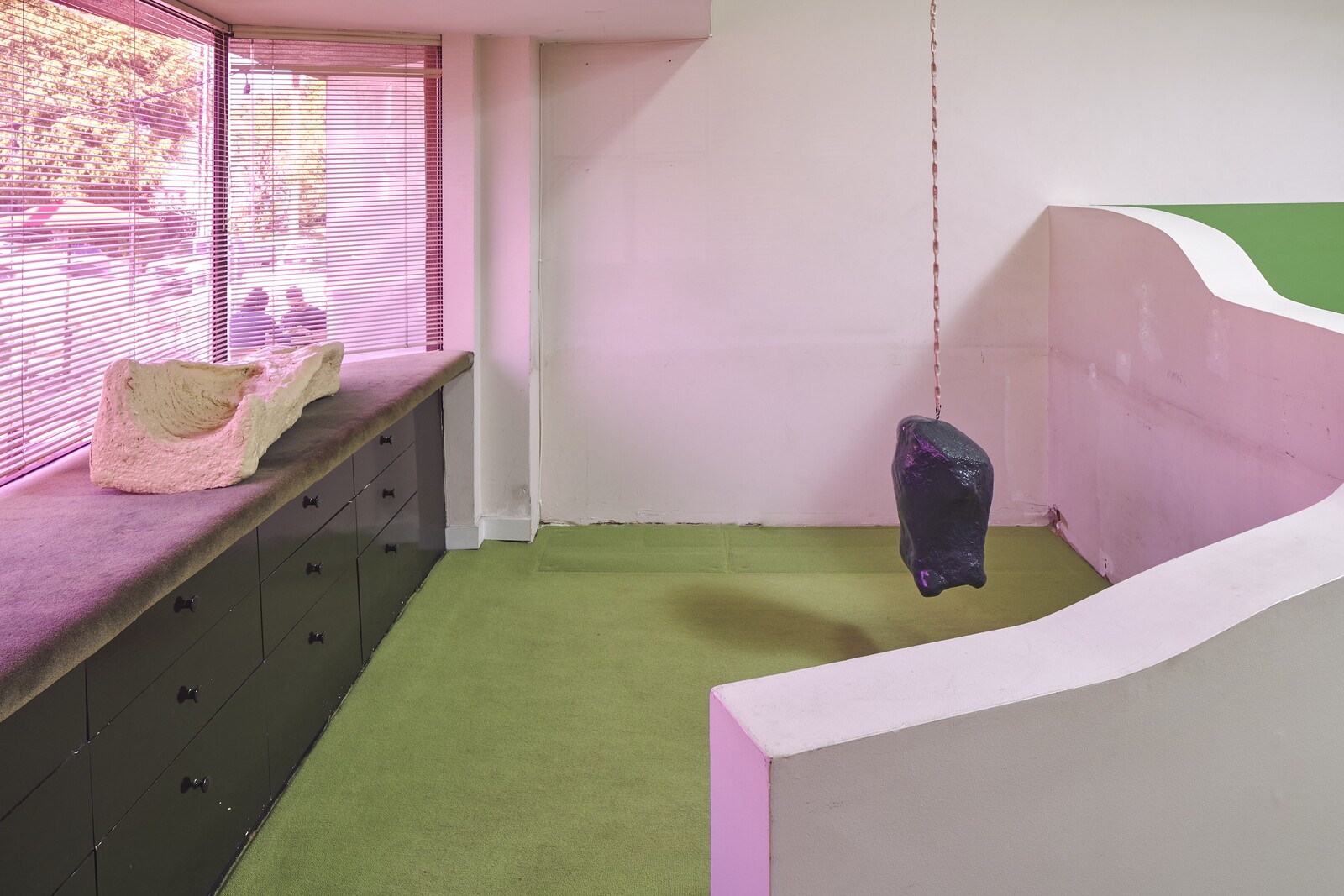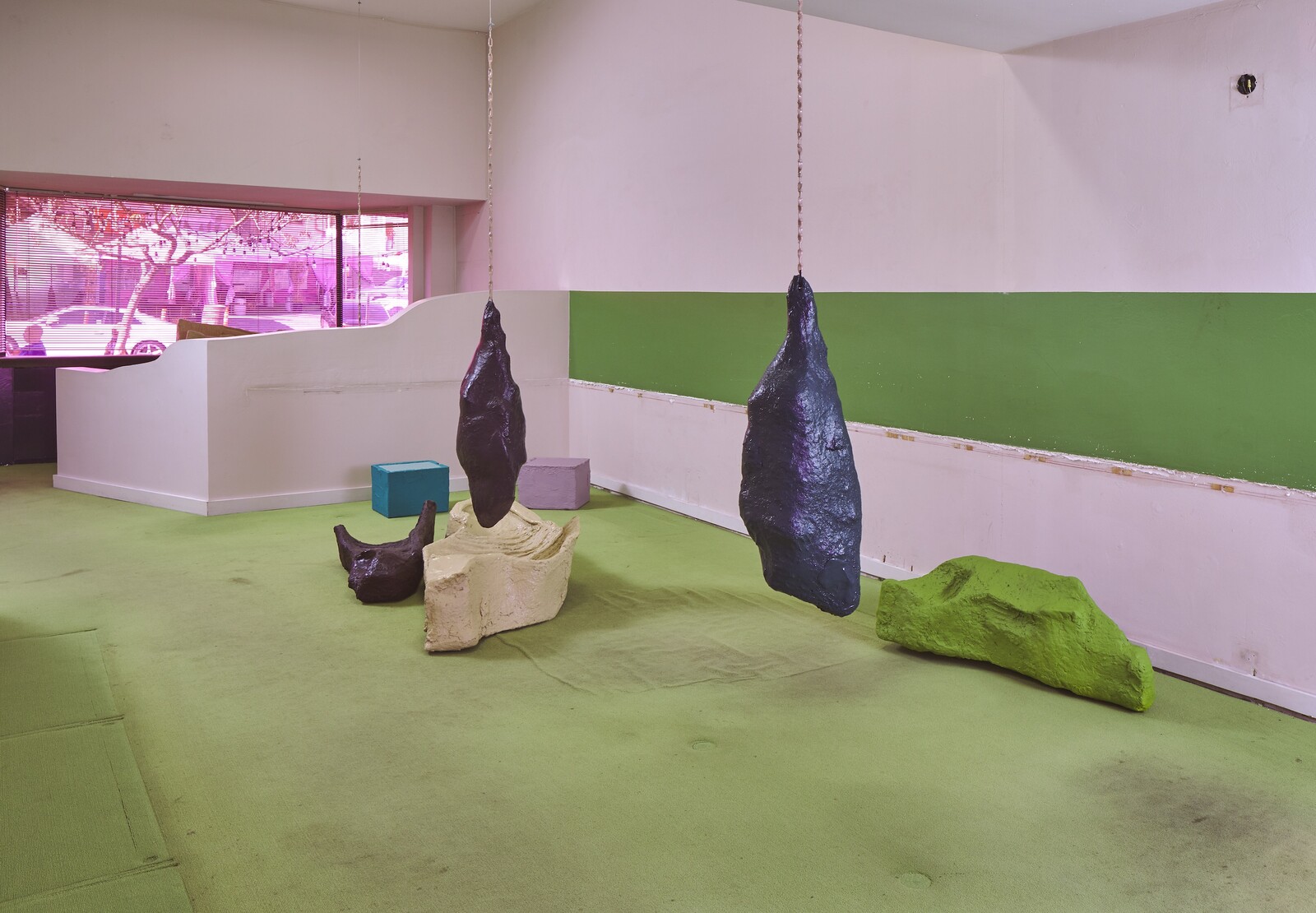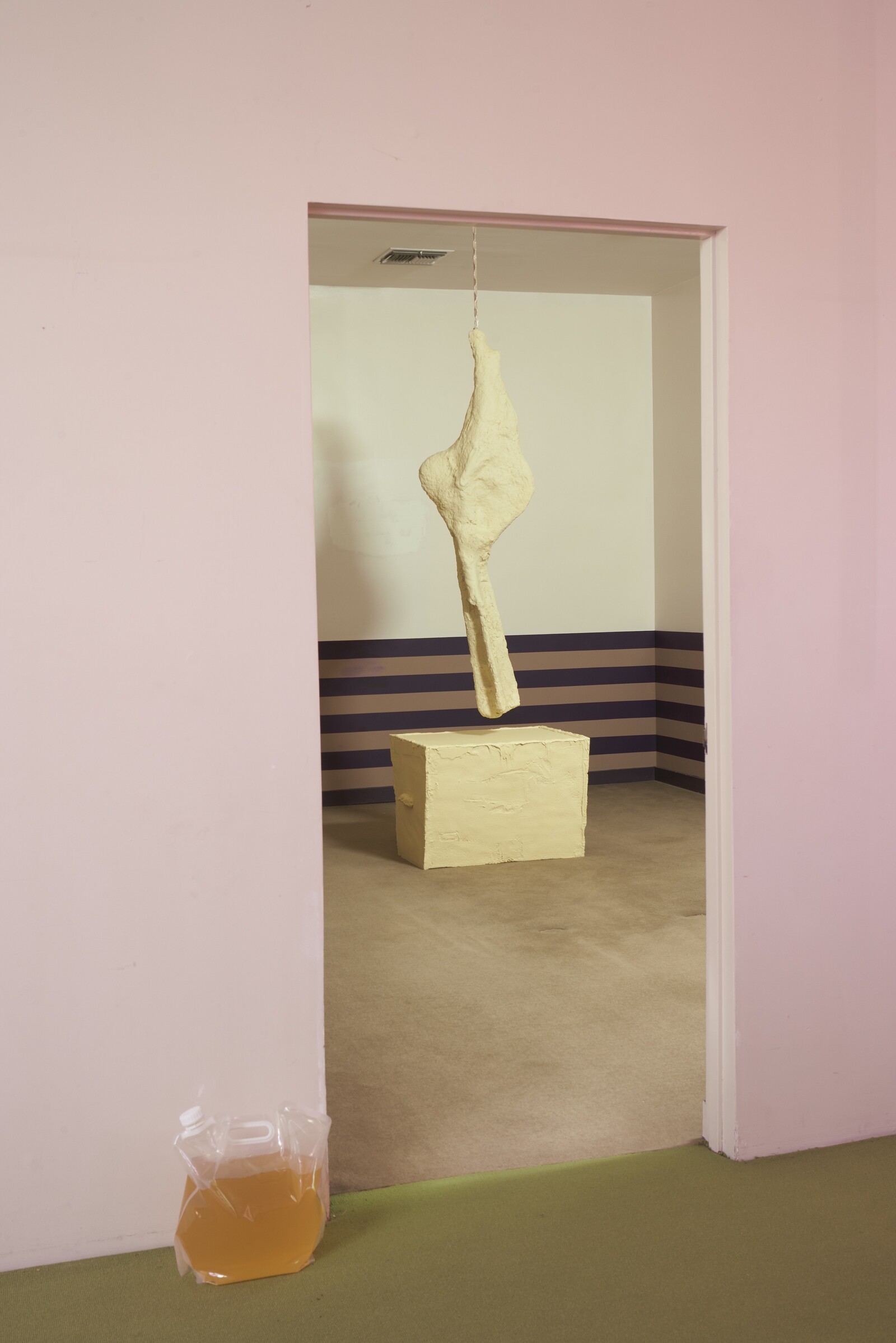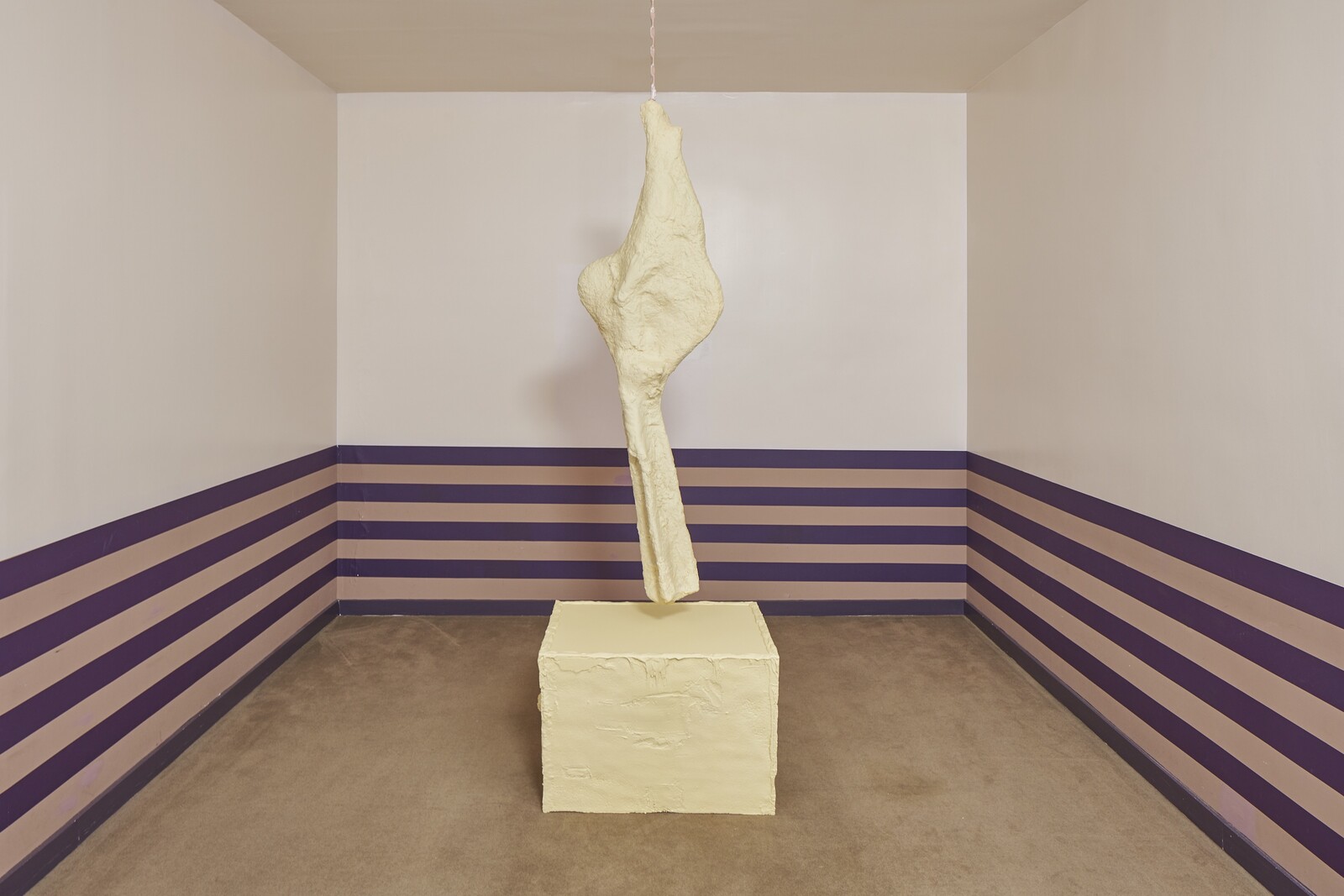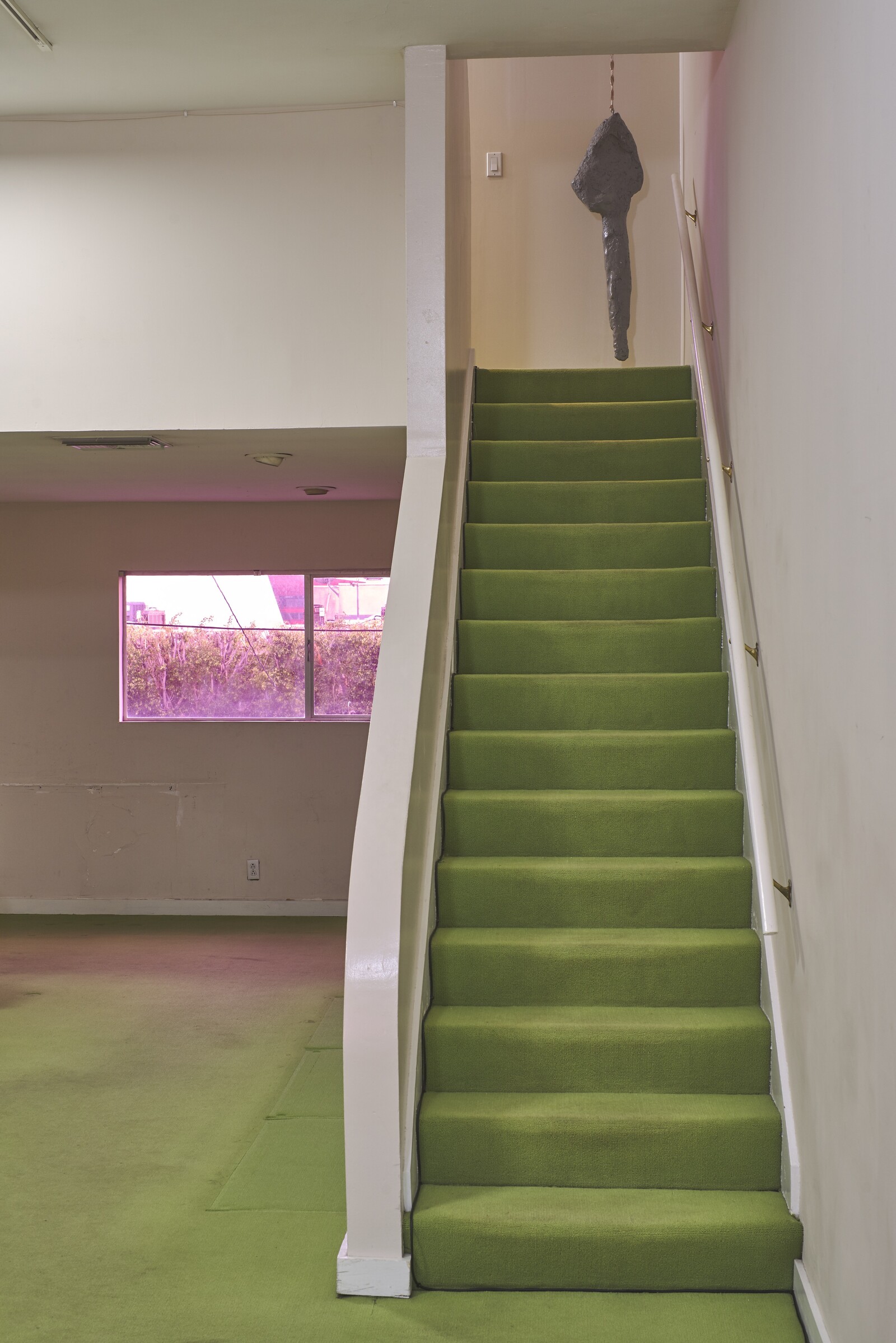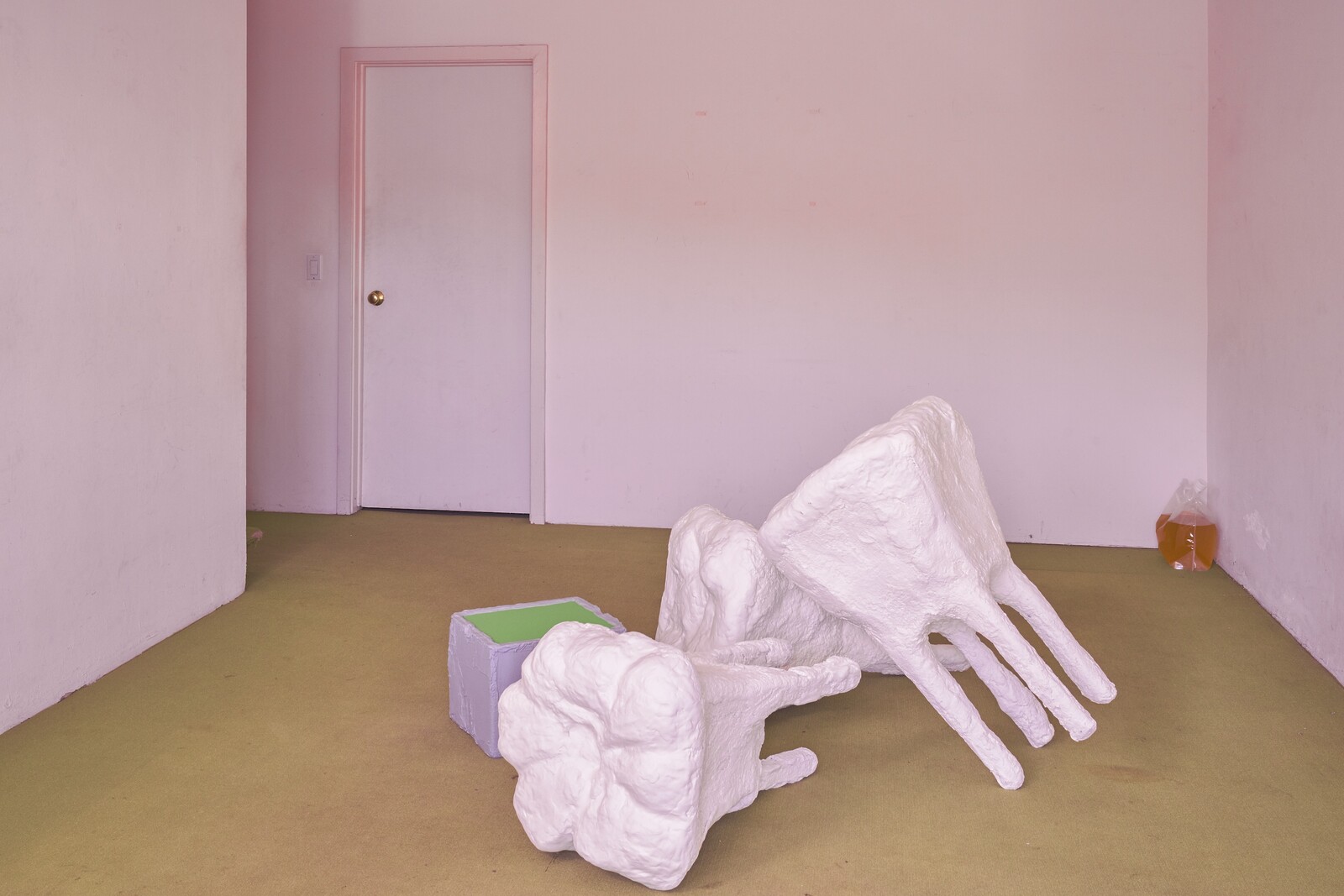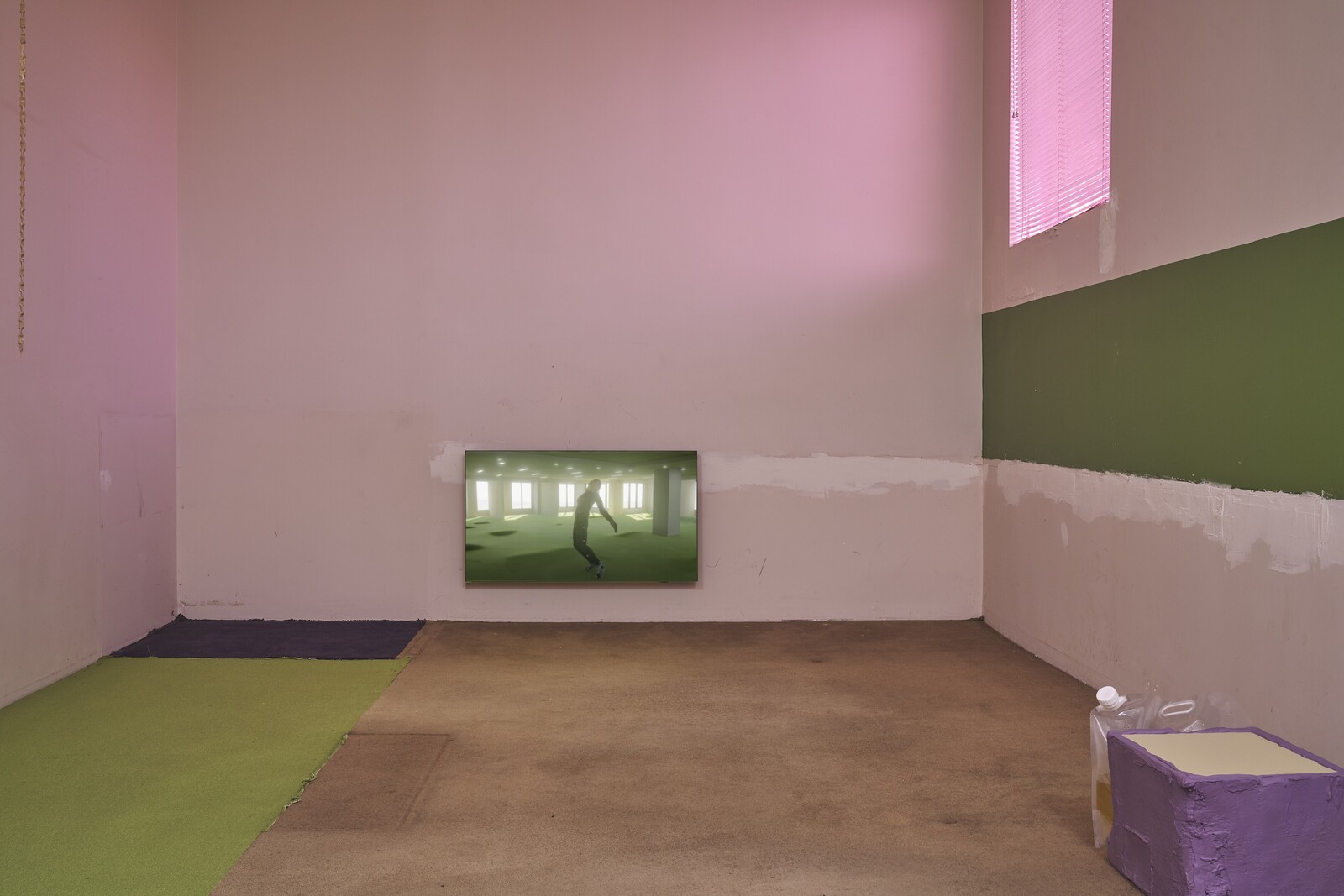I still do not really know what color the fitted carpet is that runs through the three floors of 8762 Holloway Drive in West Hollywood. Some shade of sage green, I’d guess, but it could be more lime, maybe more grass, maybe more gold. I do not know because Shahryar Nashat has covered every window in the building with a pink film (again, hard for my dazzled eyes to calibrate) that suffuses the space in a discombobulating, low-contrast pall—akin to the pulsing non-color that appears when you face into the sun with your eyes closed.
I also was not certain, on my visit to Nashat’s exhibition “THEY COME TO TOUCH,” what was in the bags of yellow liquid that slump unpleasantly in the corners of most rooms, although I suspected, and further research has confirmed, that they are filled with piss.
A former architect’s office in a 1930s commercial building designed by Rudolph Schindler, 8762 Holloway Drive has seen better days. Tidemarks of caulk on the walls reveal where desks have been ripped out. The greenish carpet is wrinkled and unevenly patched. The building is a stone’s throw from the Sunset Strip, where tourists trundle in open-top minivans past the sidewalk where River Phoenix died, before turning their heads to observe the now derelict location of the original Spago, where Swifty Lazar once hosted his Oscar parties. Across the street, Woody Harrelson opened a short-lived oxygen bar in the late ’90s. Tower Records has been closed for years. Now Tinder has its offices next door.
The location of the exhibition is apt. Corporeality and incorporeality, desire and death, are the thematic poles between which Nashat’s artworks (all untitled and dated 2021) are strung, in this installation as with much of his output. Throughout the space, glossy hunks of resin-coated papier-mâché hang from the ceiling on plastic-dipped chains, resembling carcasses in a meat market, despite being painted in unnatural tones like green, black, and puce. They are perfunctory, brute, unlovable. Notwithstanding the exhibition’s title, because they are sculptures (and also because they are pretty disgusting), no one is likely to want to touch them. The yellow fluid in the clinical sacs—reinforced handles, plastic screw tops—seems freshly drained from these flayed and desiccated remains.
Sensations are dulled by the pink light, however; this is not a horror show, as it might have been in other circumstances. I was buoyed along through the various rooms of the space by a soundtrack emanating from chunky black speakers, which sampled the brisk percussion from Maurice Ravel’s “Boléro” (1928) and the plaintive tones of “Falling into Space” (1979) by Dee D. Jackson—a singer described by curator Aram Moshayedi in his exhibition text as a “cosmic superstar.” (Moshayedi, a curator at the Hammer Museum, has a longstanding relationship with Nashat and his work, and facilitated the temporary use of the building for this exhibition.)
The sound and light induced a sense of pleasant detachment, even indifference. (I’ve never taken Ambien, but this is how I imagine it might feel.) The repetitious quality of the soundtrack and the sculptures added to the torpor. Alongside the meaty hunks were rectangular forms rendered in similar materials, roughly caked around the sides but smooth on top. In his text, Moshayedi describes these “memory boxes” as “accessories to the various accumulations;” certainly, they feel incidental to the main plot, calling to mind empty plinths or permanently sealed containers, their memorial contents inaccessible. One, in dental-putty pink, is chroma-key green on top—a color designed to disappear digitally, but which, ironically, pops fluorescently through the pink fug. Despite its desire for invisibility or immateriality, it is painfully present.
In the basement downstairs, three craggy white forms are tumbled with contrived carelessness onto the middle of the green carpet. I think these are meant to be giant molar teeth, but their roots also conjure the legs of side tables as if made in plaster by Franz West. If at this point in the exhibition I was ready to be shaken awake by a dramatic inflection point, these teeth did not quite deliver. Not nightmarish, not surreal, not funny or appalling or even particularly descriptive, they were unsatisfying. My gratification was frustrated—although maybe that was Nashat’s intention. If so, it seems like a low bar.
Upstairs was a different story. As with many of Nashat’s installations, sculptural abstraction is counterpoised by graphic figuration in the form of video. On a wall-mounted flatscreen, a looped animation of a male figure recoiling as if shot, then falling to the ground, plays over and over, in and out of sync with the swells and silences of the soundtrack. The animation is the style of 3D modeling that is both too realistic and not realistic enough for screen entertainment, redolent instead of behind-the-scenes applications: in this instance, for mapping the dots on a figure’s bodysuit as he pretends to die. Except that normally, as I understand it, such bodysuits are worn by live actors, then imported into a CGI environment. In Nashat’s version, the actor is already digital. Already dead—or never alive.
Here’s where it gets good. The fake fake-dying man stands in a room with a green carpet similar to the carpet in 8762 Holloway Drive. He is, in a sense, an analog (excuse the pun) of the papier-mâché sculptures hanging throughout the building. Near to the video monitor, a plastic-dipped chain hangs empty, as if the body just slipped off it and absconded into the virtual space of the video. The fake-dead sculptures are performing their own demise too, despite being coated in resilient, archival-strength epoxy resin.
As I leave the gallery and turn back to look at the building, I see that it too is coated in a crusty skin of green-painted stucco. A modernist archetype in bad shape, not preserved well enough to make it onto the historic register but too important to tear down, it is now a monument to disappointment. A memory box, full even when empty. I am grateful to Nashat for prizing it open.


